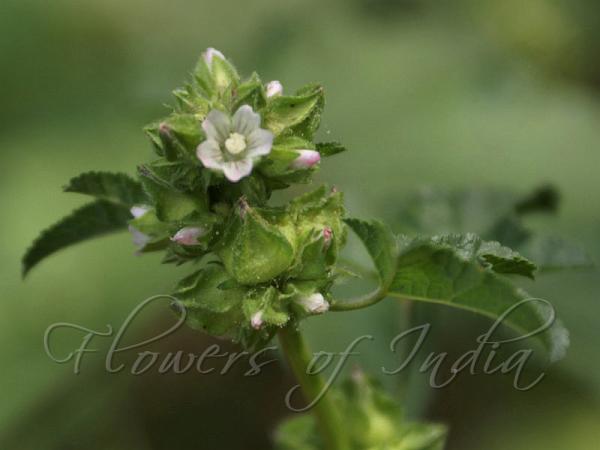|
| Chinese Mallow |
|

|

| File size | 63572 |
| Original date | 7/27/11 4:05 PM |
| Resolution | 800 x 600 |
| Flash | Flash did not fire, auto |
| Focal length | 50.0mm |
| Exposure time | 1/160s |
| Aperture | 5.6 |
| Focus Distance | |
| Metering Mode | Multi-segment |
| Camera make | SONY |
| Camera model | DSLR-A100 |
| Sensor type |
|
|
|
|
Photo: |
Botanical name: Malva verticillata Family: Malvaceae (Mallow family)
Synonyms: Malva crispa, Althaea crispa, Malva meluca, Malva mohileviensis
Synonyms: Malva crispa, Althaea crispa, Malva meluca, Malva mohileviensis
Chinese Mallow is an annual or biennial that grow
up to 1.7 m. Stem is green to purplish hairy, or hairless. Leaves are
usually round in outline, 3-23 cm long, 4-25 cm broad, heart-shaped or
flat at base, both surfaces hairy, usually 5 lobed. Stipules are
lanceolate, 5 mm long, about 4 mm borad. Leaf-stalks are 4-24 cm long,
densely velvety above. Flowers are borne in leaf axils, 2 to many, in
loose or compact cluster. Flower-stalks are sometimes not visible,
sparsely hairy 3-5 mm long. False sepals are linear or
linear-lanceshaped 3-6 mm long, 1-1.5 mm broad, glabrescent, margin
ciliate. Sepal cup is free to halfway down - sepals 5-6 mm long, 3-4 mm
broad, very sparsely hairy. Petals are 7-9 mm long, purplish, hairless,
clawed, slightly notched. Stamen column is 4.5 mm long. Fruit is
enclosed in the sepal cup, 5-7 mm across. Mericarps are 10-12,
glabrous, rugose on the margins, centrally grooved or smooth on the
dorsal side, radially rugose, about 2 mm across in all directions.
The plant was an important leaf vegetable in pre-Han Dynasty China and
widely cultivated. Chinese mallow is found in the Himalayas, from Pakistan
to Bhutan, at altitudes of 2100-3300 m. Flowering: June-September.
Medicinal uses:  The seeds are used in Tibetan medicine, where they are considered to
have a sweet and astringent taste plus a heating potency. They are used
in the treatment of renal disorders, the retention of fluids, frequent
thirst and diarrhoea. The root is used to cause vomiting in the
treatment of whooping cough. The leaves and stems are said to be
digestive. They are given to women in the advanced stages of pregnancy.
The seeds are used in Tibetan medicine, where they are considered to
have a sweet and astringent taste plus a heating potency. They are used
in the treatment of renal disorders, the retention of fluids, frequent
thirst and diarrhoea. The root is used to cause vomiting in the
treatment of whooping cough. The leaves and stems are said to be
digestive. They are given to women in the advanced stages of pregnancy.
 The seeds are used in Tibetan medicine, where they are considered to
have a sweet and astringent taste plus a heating potency. They are used
in the treatment of renal disorders, the retention of fluids, frequent
thirst and diarrhoea. The root is used to cause vomiting in the
treatment of whooping cough. The leaves and stems are said to be
digestive. They are given to women in the advanced stages of pregnancy.
The seeds are used in Tibetan medicine, where they are considered to
have a sweet and astringent taste plus a heating potency. They are used
in the treatment of renal disorders, the retention of fluids, frequent
thirst and diarrhoea. The root is used to cause vomiting in the
treatment of whooping cough. The leaves and stems are said to be
digestive. They are given to women in the advanced stages of pregnancy.
Identification credit: Gurcharan Singh
| Photographed in Baramulla, Kashmir. |